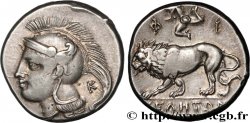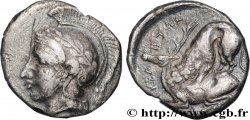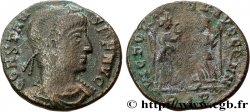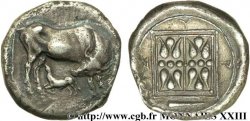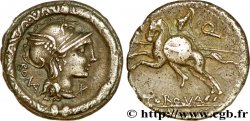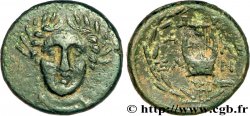v61_0004 - LUCANIA - VELIA Nomos, statère ou didrachme
MONNAIES 61 (2014)
起拍价 : 480.00 €
估价 : 780.00 €
竞价记录 : 917.00 €
出价数量 : 4
最高出价 : 1 000.00 €
起拍价 : 480.00 €
估价 : 780.00 €
竞价记录 : 917.00 €
出价数量 : 4
最高出价 : 1 000.00 €
种类 Nomos, statère ou didrachme
日期: c. 305/304-293/290 AC.
铸币厂名称/城市 Lucanie, Vélia
材质 silver
直径 20 mm
模子方针 1 h.
重量 6,75 g.
稀少度 R1
发行人: groupe VII, section 72
关于品相的说明
Exemplaire sur un flan large bien centré des deux côtés. Très belle tête d’Athéna au droit finement détaillé. Joli revers de style fin à l’usure superficielle. Très belle patine de médaillier avec des reflets mordorés
出版目录中的项代码 :
正面
正面的文字 ANÉPIGRAPHE.
正面的说明书 Tête d'Athéna à droite, coiffée du casque attique à cimier avec triple aigrette, orné d'un griffon.
背面
背面的说明书 Lion passant à droite ; pentagramme au-dessus.
背面铭文 UELHTWN/ F-I
评论
Très tôt, le monnayage de Vélia a été décrit comme ayant inspiré la drachme lourde de Marseille (LT. 785-791). Certains l’ont même décrit comme un monnayage symmachique : un lion de Vélia étant l’équivalent de deux lions de Marseille. Aujourd’hui, cette théorie est remise en cause, par G. Depeyrot, non sans arguments, mais avec une certaine acrimonie. Le lion de Vélia a pu servir de modèle à celui de Marseille, mais à quelle date ? La frappe à Vélia commence dans la seconde moitié du Ve siècle avant J.-C. pour se poursuivre jusqu’en 281 avant J.-C. À quel moment les Massaliotes auraient-ils empruntés le lion de Vélia ?.
Very early on, the coinage of Velia was described as having inspired the heavy drachma of Marseille (LT. 785-791). Some have even described it as a symmachic coinage: a lion of Velia being the equivalent of two lions of Marseille. Today, this theory is called into question by G. Depeyrot, not without arguments, but with a certain acrimony. The lion of Vélia could have served as a model for that of Marseille, but at what date? The minting at Velia began in the second half of the 5th century BC and continued until 281 BC. When would the Massaliotes have borrowed the lion from Velia?
Very early on, the coinage of Velia was described as having inspired the heavy drachma of Marseille (LT. 785-791). Some have even described it as a symmachic coinage: a lion of Velia being the equivalent of two lions of Marseille. Today, this theory is called into question by G. Depeyrot, not without arguments, but with a certain acrimony. The lion of Vélia could have served as a model for that of Marseille, but at what date? The minting at Velia began in the second half of the 5th century BC and continued until 281 BC. When would the Massaliotes have borrowed the lion from Velia?







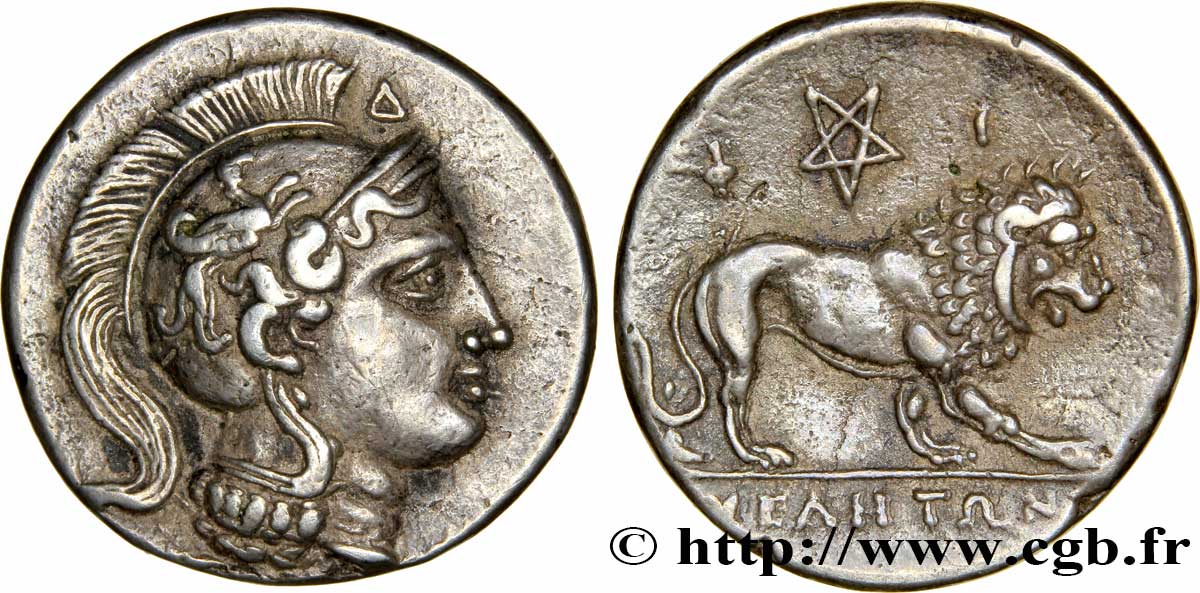
 对产品描述纠错
对产品描述纠错 打印
打印 分享我的选择
分享我的选择 提问
提问 Consign / sell
Consign / sell
 产品介绍
产品介绍